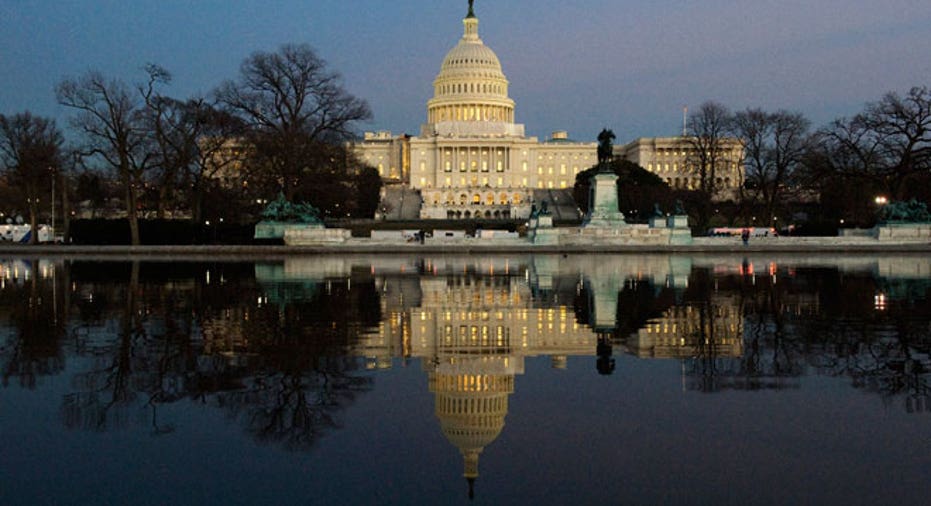Triple Threat: Gridlock Threatens Yet Another Fiscal Fiasco

Just when it looked as though gridlock in Washington could be winding down, the Senate on Wednesday threw a curve ball.
The Democratic-controlled legislative body is expected to take up a House-passed resolution to keep the government funded through December 15. But the legislation is essentially dead-on-arrival thanks to a provision inserted by House Republicans to fully repeal the Affordable Care Act, President Barack Obama’s hallmark accomplishment.
The Senate is likely to scrap the House-passed version of the continuing resolution and replace it with its own version to send back to the House, which must either pass the Senate’s new version, or revise it to send back to the Senate by the end of the fiscal year on September 30. If the House fails to do so, it risks shutting down the government’s operations.
But the effort to pass a CR in the Senate isn’t as easy as it was in the House. A set of rules spanning back to the creation of Congress makes it so the Senate must actually vote to consider a bill. Debate on just that simple motion to take up the House-passed version could last up to 30 hours. It’s only then the chamber can debate the actual legislation before it. That means a vote on the legislation could be pushed back to as late as this weekend.
What muddies the already opaque waters is a potential for a third round of fiscal fights. On Wednesday, Senate Majority Leader Harry Reid said the Senate is likely to, in its own CR, extend the existing government funding through November 15. That’s one month earlier than the House outlined in its version. That means not only will legislators have to come to agreement on funding the government now, but they may need to brace for another battle come the middle of November, fresh on the heels of an already-heated debated about raising the nation’s borrowing limit – something that needs to be done by October 17.
Uncertainty Spreads to Equity Markets
The longer Congress waits to finalize a continuing resolution, the bigger impact the indecision on the Hill has on the nation’s financial markets.
Steven Ricchiuto, chief economist at Mizuho Securities USA, said, action in Congress is becoming unpredictable – something Wall Street dreads.
“Because there are too many moving parts and no way of telling what is going on behind closed doors, all we know for sure is that the continuing resolution which funds the government will expire on September 30…Unfortunately these dates are the best we can do,” he wrote in a note to clients Wednesday, highlighting the uncertainty.
Peter Boockvar, managing director and chief market analyst at The Lindsey Group, countered that markets have become “desensitized to fiscal deadlines after experiences over the past few years.” He sees market weakness as a result of waning enthusiasm over the Fed’s decision not to taper its bond-buying program, a shock announcement made last week.
“For another day with markets it seems confusion reigns and most of the reason again stems from Washington, DC. How much of the investor reluctance is due to monetary uncertainty or more so fiscal is tough to measure,” he said in a note to clients.
Boockvar notes the Fed’s inaction combined with the fiscal uncertainty in Washington have allowed the 10-year U.S. Treasury yield to fall to its lowest level since mid-August, while having relatively little impact on equities thus far.
In a note to clients on Wednesday, the Potomac Research Group said the way out of the fiscal nightmare on the Hill is to shut-down the Republican rebellion.
“The White House has to send Joe Biden into the fray; he knows how to negotiate and is respected on Capitol Hill, unlike the president… and most depressingly, there has to be an outside catalyst to provide a sense of urgency. That catalyst is the financial markets, which may have to send a nasty signal,” the firm noted.
Debt Ceiling Deadline Looms on the Back Burner
And while Congress squabbles over funding for the federal government, the nation is hurtling toward a likely more important deadline. Treasury Secretary Jack Lew said early Wednesday the U.S. will reach its borrowing limit by October 17, the most specific deadline given to date.
“Treasury Secretary Jack Lew had a chilling message yesterday: the government may have only $50 billion in cash on hand by mid-October; inflows and outflows sometimes exceed that amount every day,” PRG noted. “This is a looming train wreck; a government shut-down, on the other hand, wouldn't affect much that's essential, and the public would hardly notice a brief shut-down.”
It’s yet to be seen how a debt ceiling breach would affect the U.S. since it’s never happened in the country’s history. However, analysts say the results would likely to be sharply bearish for financial markets. PRG estimates the probability of such a situation is still low, but warned it’s not at zero.
“The chaos at Treasury leading up to such a crisis could result in some very scary headlines regarding Social Security checks, paying the troops, paying government vendors, etc. This could become a headwind for the economy, as the FOMC undoubtedly concluded last week,” the research group wrote in its note to clients.
What’s more, if Republicans don’t get the ObamaCare repeal they’re looking for in the CR battle, leadership has said it is strongly considering tying a one-year delay of the individual mandate, the law’s key provision, to any proposal to increase the debt-ceiling. If that happens, it could spell trouble for the nation’s financial markets as the deadline draws near and the threat of a debt default and other scary consequences looms ever closer.